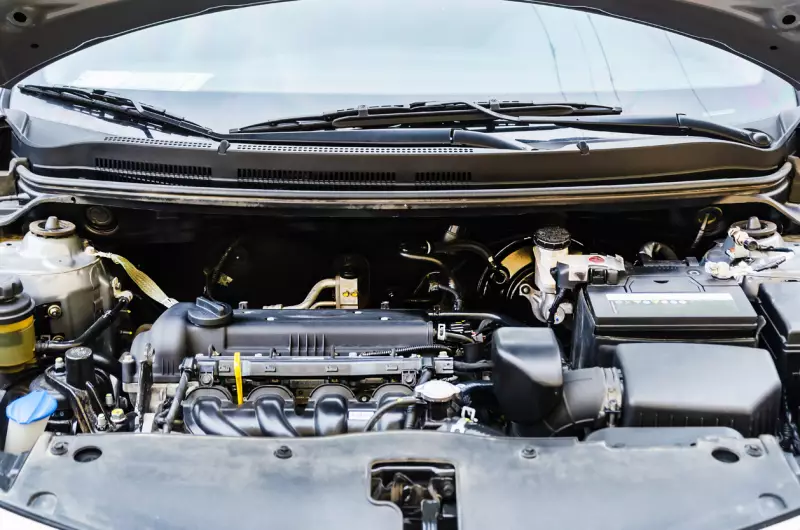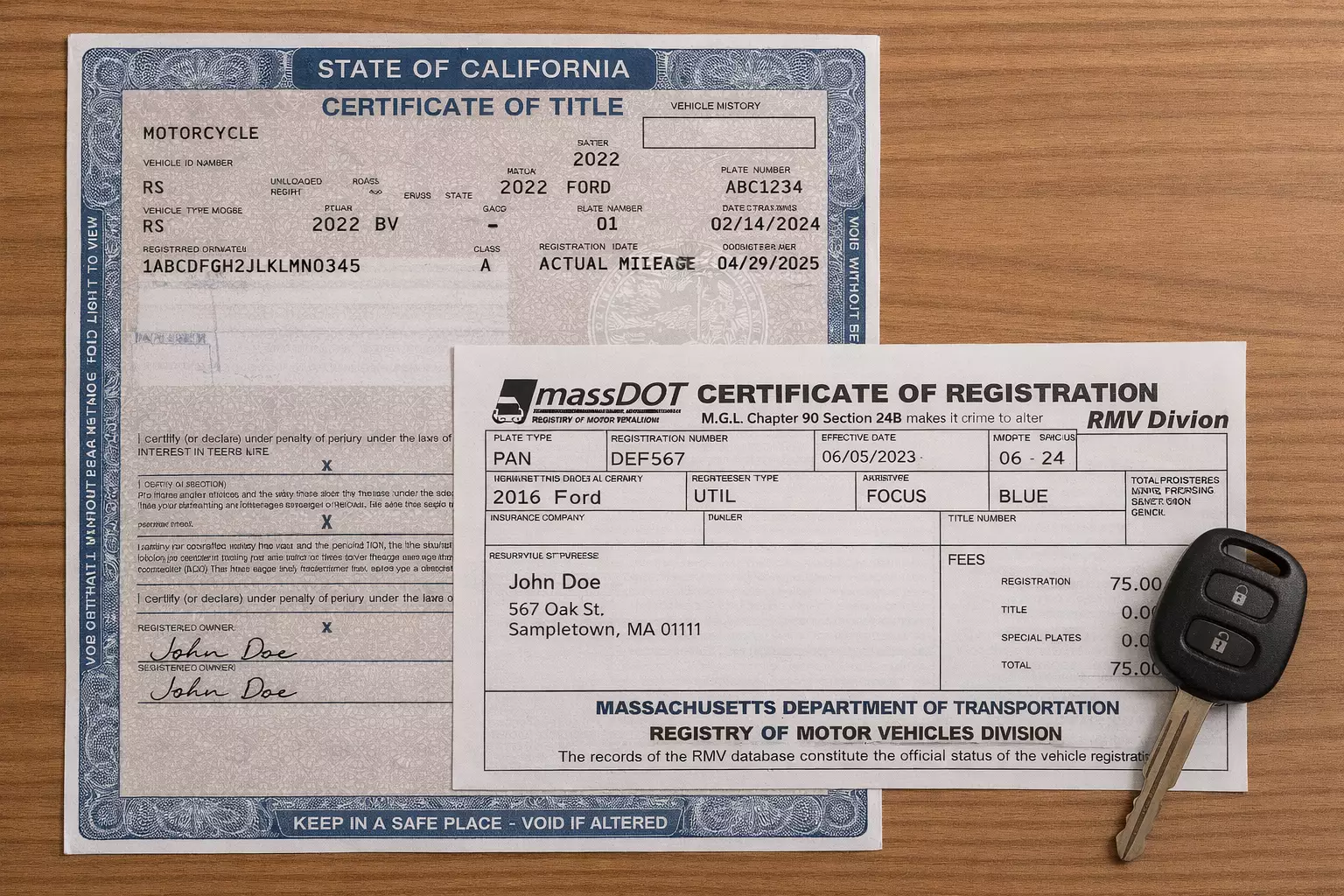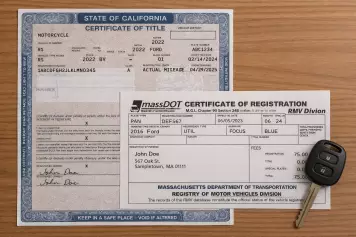The purge valve is a tiny yet crucial part of your vehicle’s emissions control system, where it quietly works to control the flow of fuel vapors and ensure they are properly managed and used for the engine's operations. While a faulty purge valve may not immediately cause your vehicle to shake, smoke, or stall, it is still a real problem that should be addressed promptly. We will help you understand what these purge valves do, why they matter, and how to identify when a purge valve is malfunctioning.
What Is a Purge Valve?
A purge valve is a vital component of a vehicle’s Evaporative Emission Control (EVAP) system. The EVAP system prevents harmful fuel vapors generated within the vehicle’s fuel system (due to temperature changes or fuel evaporation) from escaping into the atmosphere. These fuel vapors are captured and routed to the charcoal canister - also a part of the EVAP system – where they are temporarily stored. The EVAP purge valve then regulates the flow of these fuel vapors from the charcoal canister back into the engine for combustion. This is usually done during specific operating conditions, such as when the engine is running and at optimal temperature. This process ensures fuel is burnt more fully, thereby reducing harmful emissions from the vehicle and improving its fuel efficiency and overall engine performance.
What Does a Purge Valve Do?
Purge valves are a part of automotive Evaporative Emission Control (EVAP) systems and are primarily responsible for managing the flow of fuel vapors from the charcoal canister to the engine. Under normal conditions, these purge valves become active during engine operation and open up to allow the controlled flow of fuel vapors into the engine for combustion. Here is a breakdown of how they work:
- Fuel vapors are usually generated within the vehicle's fuel tank when it is not in operation. The vehicle's EVAP system captures these fuel vapors.
- Still within the EVAP system, the captured fuel vapors are routed through hoses to the charcoal canister, where they are temporarily stored. As the name suggests, the charcoal canister contains activated charcoal, which absorbs and retains the fuel vapors (preventing it from being emitted into the atmosphere).
- The EVAP system is activated when the vehicle is turned on, and the engine starts. The vehicle’s engine control module (ECM) - sometimes called the engine control unit – then monitors several parameters to determine the best time to activate the purge valve. This usually occurs at a specific temperature and RPM.
- Once the purge valve is activated and open, it allows a controlled amount of fuel vapors to pass from the charcoal canister through it and into the engine’s intake manifold. There, they are burned during the engine’s combustion process.
- The EVAP purge valve closes when the vehicle is turned off or if certain engine-related conditions (like engine load or throttle position) change, stopping the flow of fuel vapors into the engine.
The precise operation of the purge valve optimizes the engine combustion process and improves engine performance and efficiency. By controlling the flow of fuel vapors, the purge valve also reduces the emission of harmful pollutants into the atmosphere and ensures that stored fuel vapors are effectively utilized.
Where is the Purge Valve Located?

The specific location of the purge valve varies slightly depending on the vehicle's particular make and model. Nonetheless, the purge valve is usually located either between the fuel tank and the engine intake manifold, along the intake manifold, or close to the engine itself. Regardless of its location, the purge valve is typically directly connected to the vehicle’s EVAP system's hoses and tubing. You can effectively locate the purge valve in cars, trucks, and other kinds of vehicles by:
- Checking the area near the intake manifold
- Tracing the hoses and tubing connected to the charcoal canister
- Consulting the vehicle’s service manual
- Using websites, repair guides, and other online resources that speak to your vehicle’s specific make and model to find information and visual aids for locating its purge valve
What are the Symptoms of a Bad Purge Valve?
Several signs may indicate issues with your vehicle’s purge valve (and Evaporative Emission Control system in general). Here are some common symptoms of a bad purge valve to watch out for:
- Check Engine Light Activation: the check engine light turning on is one of the most common indications that there is a problem with the purge valve. However, be aware that the check engine light can be triggered for several reasons; further diagnosis is usually required to determine whether the purge valve is actually faulty.
- Rough Idling: a bad purge valve can cause your vehicle to feel rough and unstable when idling because the engine cannot get enough fuel vapor from the charcoal canister.
- Difficulty Starting the Engine: a faulty purge valve can make starting the vehicle difficult, with the engine struggling to turn over. This difficulty is usually more noticeable after refueling.
- Increased Fuel Consumption: a noticeable increase in your vehicle’s fuel consumption is usually an indication that your purge valve is malfunctioning. This reduced fuel efficiency is because the purge valve no longer regulates the flow of fuel vapors into the engine. This, in turn, results in an imbalance in the fuel-air mixture that gets to the engine, causing the engine to burn more fuel to compensate for this imbalance.
- Poor Engine Performance: if your engine is running poorly and no longer performing as well as it used to, a malfunctioning purge valve may be to blame.
- Increased Emissions: a faulty purge valve usually results in higher levels of hydrocarbon emissions from your vehicle.
Always get your vehicle checked out as soon as you notice any of these issues; ignoring the symptoms of a faulty purge valve can have detrimental effects like:
- Reduced engine performance, responsiveness, and overall vehicle drivability
- Increased vehicle emissions. This can also lead to failed vehicle emissions tests and environmental regulation violations
- Further damage to other parts of the vehicle’s EVAP system, and even its engine, resulting in more extensive and expensive repairs.
How to Test a Purge Valve
Testing a purge valve to diagnose problems with it (or the vehicle's EVAP system) usually involves a combination of visual inspections and diagnostic tests. These tests are typically done with tools like a multimeter, vacuum pump, gloves, and the vehicle’s service manual.
Here are some ways that you can test a purge valve:
- Locate the purge valve. It is usually located near the engine intake manifold. However, you can refer to the vehicle’s service manual or any other available resource to confirm this.
- Check the purge valve for cracks, leaks, loose connections, or any other obvious signs of damage or leakage.
- If the check engine light is on, use an OBD II scanner to read and interpret the error codes.
- Disconnect the electrical connector from the purge valve and use a multimeter to check for continuity (by placing the multimeter probes on the purge valve connector's terminals). A reading of infinite resistance usually indicates an open circuit and a faulty purge valve. Alternatively, you can apply voltage to the purge valve's electrical connector and listen for a clicking sound indicating the valve has opened. If this doesn't happen, then the purge valve is faulty.
- Use a vacuum pump to test the purge valve's operation. To do this, remove the purge valve from the vehicle, attach the vacuum pump, and apply a vacuum. If it doesn’t hold (close tightly when the vacuum is applied and remain closed when the vacuum is released), then the valve is leaking and needs to be replaced.
- If you cannot perform these tests yourself or get a result indicating a faulty purge valve, consider consulting a professional mechanic specializing in your vehicle's specific make and model to diagnose and confirm the issue expertly.
How to Replace a Purge Valve
To replace a faulty purge valve, you will need the following materials and tools:
- A new purge valve
- Socket set
- Screwdriver
- Pliers
- Safety gloves and eye protection
Here’s a step-by-step procedure for replacing purge valves:
- Locate the purge valve (consult the vehicle's service manual or other available resources for this).
- Disconnect the vehicle’s battery (for safety purposes)
- Remove the electrical connector (some cars may not be equipped with this).
- Carefully detach the purge valve from the vacuum hose. You can use pliers to loosen hose clamps that may be securing the hose to the valve. (Skip this step if the purge valve is not secured to a vacuum hose).
- Remove any mounting fasteners securing the purge valve to the vehicle using a socket set.
- Remove the faulty purge valve from its mounting location. Be mindful of any remaining hoses or electrical connectors attached to it when doing this.
- Place the new purge valve in its mounting location. Make sure that it aligns with the vehicle’s mounting holes, and secure it in place using the mounting fasteners removed earlier.
- Reconnect the vacuum hose to the new purge valve (where applicable). Ensure it is securely connected and the hose clamps are properly tightened to prevent leaks.
- Reconnect the electrical connector, where applicable.
- Reconnect the vehicle’s battery.
- Start the vehicle and monitor the engine’s operation. Listen for abnormal noises or functionality. If necessary, use a diagnostic scanner to clear any stored fault codes.
Be aware that even though replacing a purge valve is a generally straightforward procedure, it still requires basic mechanical skills and access to the right tools. If you do not have these or are unsure whether the purge valve is the cause of the problem, it is best to consult a qualified mechanic to diagnose the issue and replace the purge valve if required.
How Long Can You Drive with a Bad Purge Valve?
How long you can drive with a bad purge valve usually depends on the severity of the valve's problem and the driving conditions. Nevertheless, it is not advisable to do this for an extended period; always get your purge valve checked out as soon as you notice any signs of malfunctioning. Failing to do this can have immediate and long-term effects on the vehicle and the environment.
Short-term impacts of driving with a bad purge valve include rough idling, difficulty starting the vehicle, reduced drivability, increased fuel consumption, and increased emissions escaping into the atmosphere, contributing to air pollution. Long-term consequences of failing to replace a malfunctioning purge valve include engine damage from improper combustion and potential damage to other components of the vehicle’s EVAP system, leading to costly and avoidable repairs. You also risk failing local, state, or federally mandated emissions tests and the associated fines, sanctions, and other legal repercussions. The continued emissions from driving with a faulty purge valve also means an increase in the amount of pollutants released into the atmosphere, leading to worsening air quality issues and contributing to global climate change and environmental degradation.
Conclusion
In summary, purge valves are vital vehicle components that regulate fuel vapor flow, reduce harmful emissions, and contribute to a smooth engine operation. Maintaining a properly functioning purge valve is essential for optimal vehicle performance, safety, and compliance with environmental regulations. As such, paying attention to any symptoms of a faulty purge valve that your vehicle may display and addressing these issues promptly is important. Doing this is not only essential in ensuring that your vehicle operates properly and efficiently but also goes a long way in preserving environmental health.








![Best Sites to Check a Car’s History [2025 Review]](https://media.infopay.net/thumbnails/K8lMeG2QLjE46LPqZlmoi6SunKKdT5qvlaRZk6e1.webp)










![Best Sites to Check a Car’s History [2025 Review]](https://media.infopay.net/thumbnails/K8lMeG2QLjE46LPqZlmoi6SunKKdT5qvlaRZk6e1-w356.webp)
